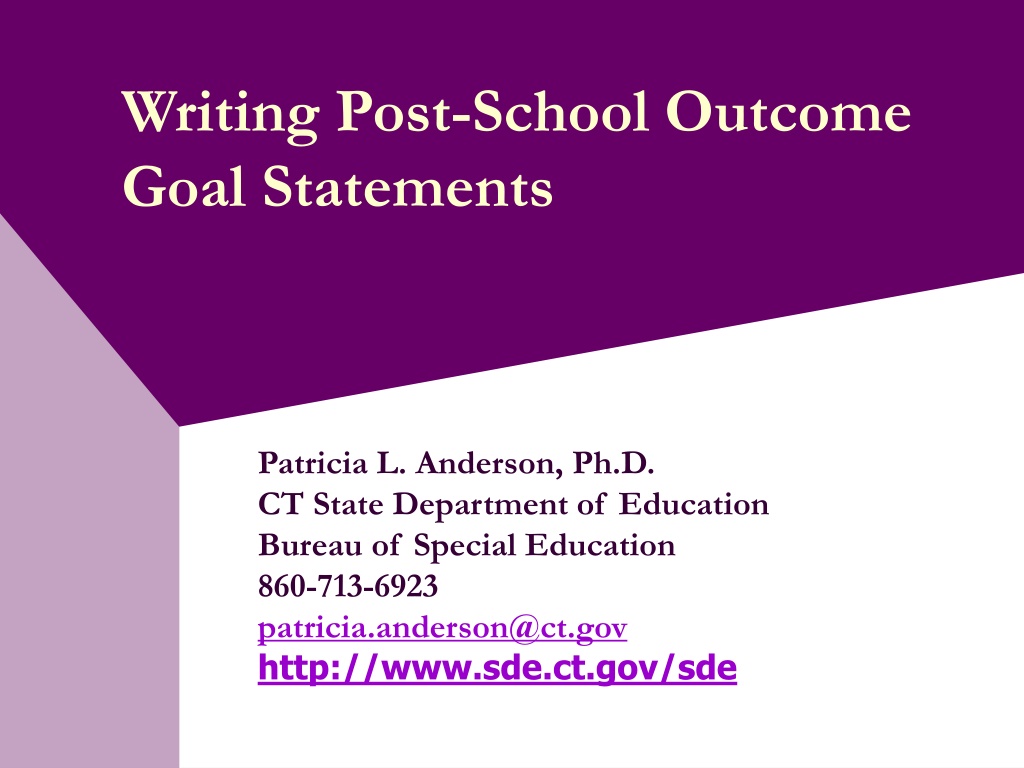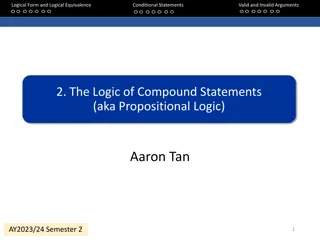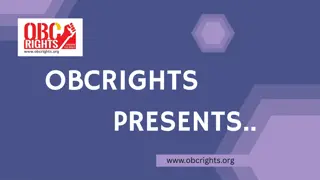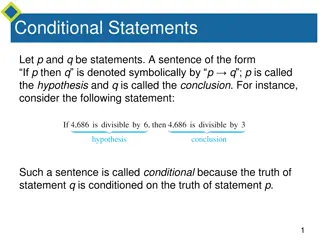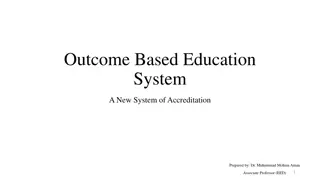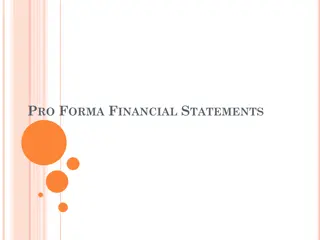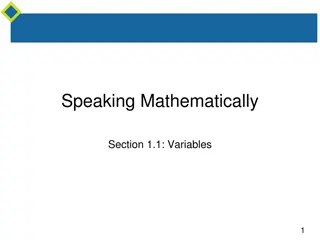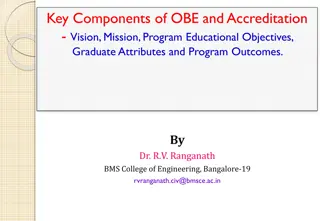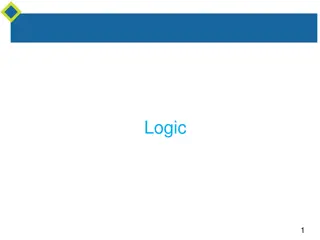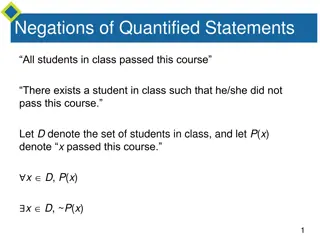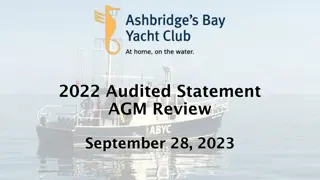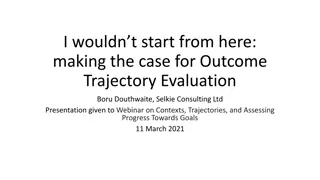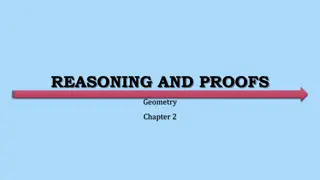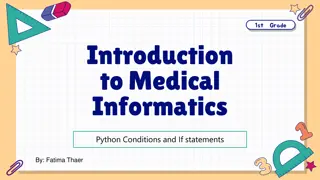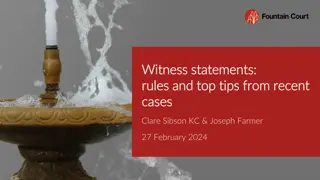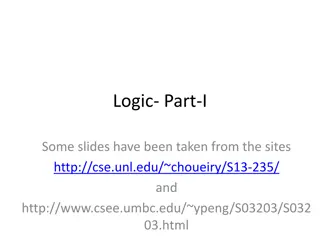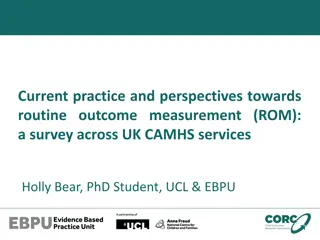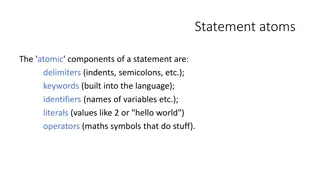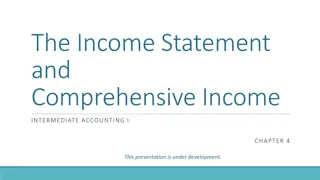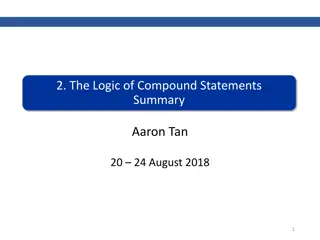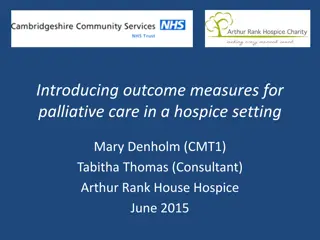Understanding Post-School Outcome Goal Statements in Education
Secondary transition involves a coordinated set of activities to facilitate academic and functional achievement, preparing students for post-school activities like postsecondary education, employment, or independent living. Transition services must begin by age 16 and include measurable postsecondary goals based on assessments. Transition assessment is an ongoing process to inform decisions in college, training, employment, and independent living areas. Post-School Outcome Goal Statements reflect a child's desired achievements after leaving secondary school. Non-examples clarify what these statements are not.
Download Presentation

Please find below an Image/Link to download the presentation.
The content on the website is provided AS IS for your information and personal use only. It may not be sold, licensed, or shared on other websites without obtaining consent from the author. Download presentation by click this link. If you encounter any issues during the download, it is possible that the publisher has removed the file from their server.
E N D
Presentation Transcript
Writing Post-School Outcome Goal Statements Patricia L. Anderson, Ph.D. CT State Department of Education Bureau of Special Education 860-713-6923 patricia.anderson@ct.gov http://www.sde.ct.gov/sde
Secondary Transition Coordinated set of activities Results-oriented process Academic and functional achievement Facilitates movement from school to post-school activities Postsecondary education or training, employment, and if appropriate, independent living skills
Secondary Transition Transition Services 300.320(b) Beginning not later than the first IEP to be in effect when the child turns 16, or younger Updated annually, thereafter IEP must include Appropriate measurable postsecondary goals based upon age-appropriate transition assessments Related to postsecondary education or training, employment, and if appropriate, independent living skills (OSEP, 2007) Transition services (including courses of study) needed to assist child in reaching postsecondary goals
Transition Assessment An ongoing process of gathering information that will help students, educators, and family members make informed decisions about life, during and after high school . . . specifically in the areas of college, training, employment and independent living.
Post-School Outcome Goal Statements A Post-School Outcome Goal Statement is generally understood to refer to those goals that a child hopes to achieve after leaving secondary school (IDEA 2004 Part B Regulations, 300.320(b), discussion of Final Rule p. 46,668) A Post-School Outcome Goal Statement is NOT the process of pursuing or moving toward a desired outcome. National Secondary Transition Technical Assistance Center:http://www.nsttac.org/
Post-School Outcome Goal Statements Non-Examples: After high school, Jodi will explore taking classes at the local community college. The fall after graduation from high school, Allison plans to enroll in a four-year university in the Southeast. Marianne will complete all academic coursework in preparation for going to a four-year college.
Post-School Outcome Goal Statements Non-Examples: Alejandro wants to work as a welder. Vanessa will work with the vocational rehabilitation services to ensure competitive employment. Upon completion of high school, Kevin will express his preferences related to his postsecondary employment options, given picture symbols on an augmentative communication device.
Post-School Outcome Goal Statements After graduation, Jason will enroll in a 4-year college degree program of his choice, majoring in the field of mathematics. Participation in postsecondary education is the focus of this post-school outcome goal statement. Enrollment at a 4-year college can be observed. Enrollment at a 4-year college occurs after graduation and it is stated that this goal will occur after graduation.
Post-School Outcome Goal Statements Upon completion of high school, Ted will enroll in the general Associates Degree program at the local community college in September of 2008. Participation in postsecondary education is the focus of this post-school outcome goal statement. Enrollment at a community college can be observed, as in Ted enrolls in courses or he does not. Enrollment at a community college occurs after graduation.
Post-School Outcome Goal Statements The fall after high school, Juanita will enroll in courses (non-degree) at the local community college. Participation in postsecondary education is the focus of this post-school outcome goal statement. Enrollment in courses (or not) can be observed. The goal will occur after Juanita leaves high school.
Post-School Outcome Goal Statements Carol will independently attend culinary training at the XYZ Center after exiting from high school, so that she can obtain entry level employment within the food services industry. Participation in training, employment, and independent living skills are part of this post-school outcome goal statement. Enrollment in the culinary training program and entry level employment in food services job can be observed. Participation in the training will occur after exiting from high school.
Post-School Outcome Goal Statements Upon completion of high school, Joan will work independently in a competitive employment setting in the clerical field. Employment and independent living skills are the focus of this post-school outcome goal statement. Employment in a competitive clerical position can be observed. It is stated that this goal will occur upon completion from high school.
Post-School Outcome Goal Statements After finishing high school Alex will increase his work hours in the business department of a local office supply store, contacting XYZ Adult Agency for employment support services. Participation in employment is the focus of this post-school outcome goal statement. Increasing work hours is measurable. The expectation, or behavior, is explicit, as in Alex continues employment and accesses adult agency services (or not). It is stated in this goal that increased employment and use of adult services will occur after Alex leaves high school.
Post-School Outcome Goal Statements After high school, Jeremy will improve his social, self-advocacy, and self-care skills by attending instruction at a center-based adult day program. Training and independent living skills are the focus of this post-school outcome goal statement. Improving the skills noted is an explicit outcome for Jeremy. Improving skills and attending the program are observable goals that will occur after Jeremy leaves high school.
Post-School Outcome Goal Statements Upon completion of high school, Abby will attend a recreational/leisure skills program at a day services program on a daily basis. Participation in independent living skills, specifically community participation, is the focus of this goal. Participation in recreation/leisure programs can be observed and measured. This goal will occur after completion of high school.
Post-School Outcome Goal Statements Upon completion of high school, Lisa will learn to utilize public transportation, including the public bus and uptown trolley. Participation in independent living skill development, specifically community participation, is the focus of this goal. Use of the bus can be measured, as in Lisa performs the necessary activities or does not perform the activities. It is stated in this goal that the instruction will occur after graduation.
Post-School Outcome Goal Statements After graduation, Rolanda will live at home and participate to the maximum extent possible in her daily routines (e.g., feeding, dressing, bathing, activating small appliances/media devices, choice making) and environment through the use of technology. Post-school outcome goal statement is focused on independent living (residential, self-care, community participation, communication skills). Goal is stated in an explicit manner that can be observed (i.e., will live , participate. ) The post-school outcome goal statement identifies outcomes for Rolanda after high school, not activities or processes toward outcomes.
Post-School Outcome Goal Statements The summer after leaving high school, Stephanie will independently ride the bus each work day to her job with Marriot Food Services, where she will participate in classes each year, as offered by her employer, to advance industrial kitchen skills. After graduating from high school, Ricardo will enroll in a four-year college to obtain his undergraduate degree in history and education, to become a high school social studies teacher.
Annual IEP Goals For each post-school outcome goal statement, there must be an annual goal(s) and objectives included in the IEP that will help the student make progress towards the stated post-school outcome goal(s).
For each Annual Goal, is there at least one of the following listed? Instruction Related Service(s) Community Experience(s) Development of Employment and Post-School Objectives Acquisition of Daily Living Skills (if appropriate) Functional Vocational Evaluation (if appropriate)
Common Objectives Student will attend (participate/co-facilitate) his/her IEP Team Meeting. Language Arts Student will complete learning styles inventory . . . xx job shadow experiences . . . interest inventory . . . situational assessment. Language Arts, Science, Social Studies, Community Time Management Skills All classes
Common Objectives Student will engage in a process of generating ideas, drafting, revising, editing and publishing or presenting: write college application essays; develop portfolio; complete job application; resume. Language Arts, Social Studies, Technology Organizational and Study skills All classes Self Advocacy Skills All classes
